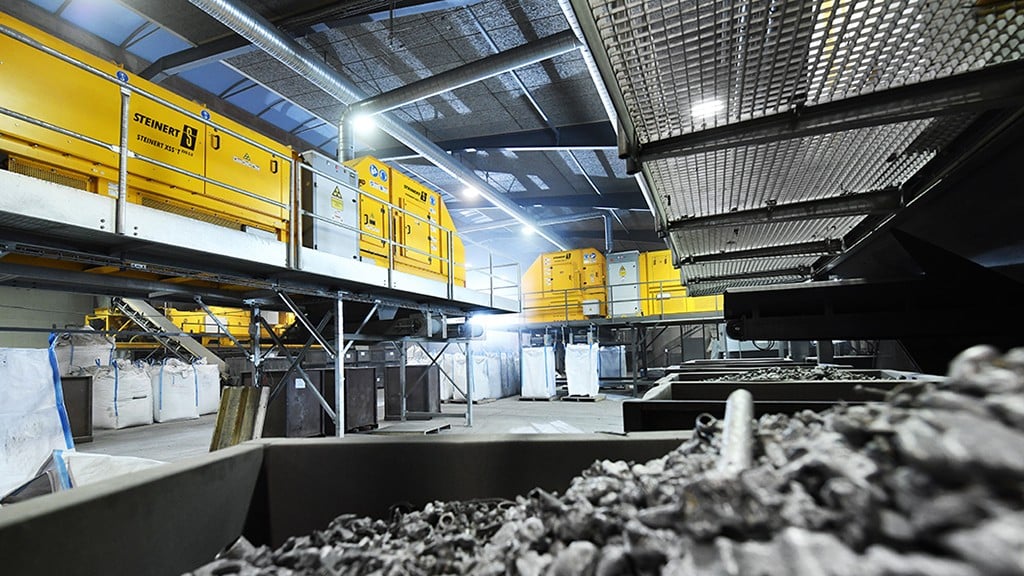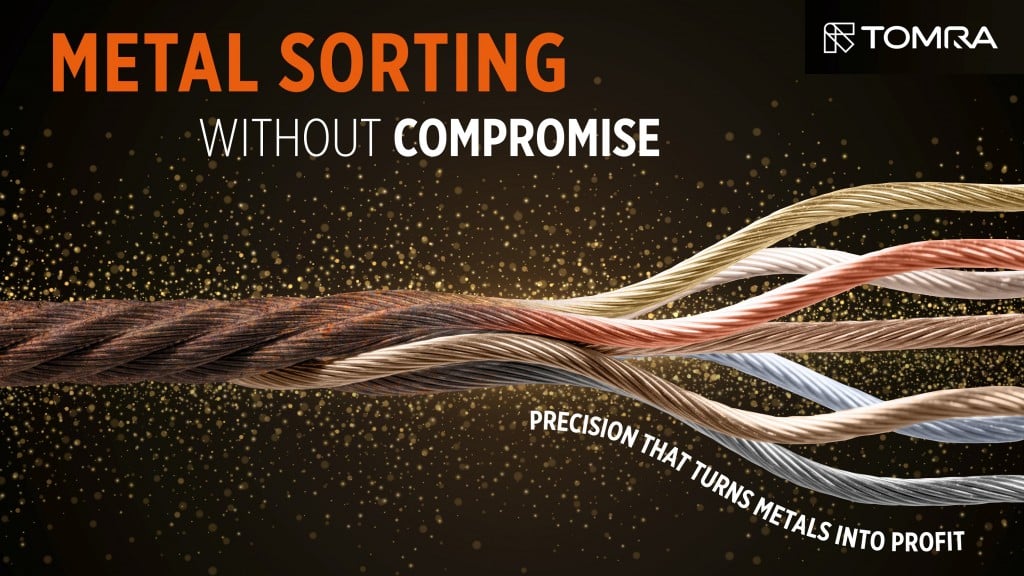
According to Germany-based recycling equipment and systems manufacturer, STEINERT, given that aluminium is increasingly replacing conventional materials, such as steel, and can be 100 percent recycled, the metal has a very promising future. What's more, using secondary aluminium, also known as green aluminium, cuts energy use in production by up to 90 percent compared with virgin material.
In situations where recovered, recycled aluminium is being used to produce new products, aluminium manufacturers need their secondary raw materials to display consistently high levels of purity. Steinert's new EVO 5.0 generation of machines are built to do just this.
Steinert says dry density sorting using x-ray transmission is a proven method used by hundreds of metal recycling firms around the globe. Focused specifically at processors of aluminium, these new sorting machines are used to separate free heavy metals, aluminium compounds, free magnesium and wrought and cast aluminium parts. In addition, the company says, ongoing development work now ensures specific benefits for the sorting process.
The EVO 5.0 generation with new functions
Thanks to Multilayer Data Evaluation (MDE), the sorting machine is able to use even more distinguishing criteria for detection due to high-resolution object recognition and by undertaking classification in parallel. Complex sorting tasks, such as magnesium detection are solved easily. Automatic x-ray monitoring and calibration (AXM) of the x-ray sensors help achieve consistently high detection and sorting quality.
The hardware has also been improved. The high-resolution valve pitch of 6.25 mm enables even more efficient sorting of fine material down to 5 mm. The x-ray scan area is cleaned automatically in the new generation of machines. This vastly reduces the amount of manual cleaning needed and maintains a consistently high level of detection quality. The 4-year warranty for the x-ray source and sensors provides operational reliability and keeps operating costs low.
Downloadable e-book for guidance on sorting options
A so-called solution guide can now be downloaded as an e-book at: https://steinertglobal.com/met... to provide an initial overview of the opportunities provided for sorting aluminium scrap and other materials.
Although aluminium scrap comes from different sources like profiles and plates, incineration bottom ash, shredder systems or Dense Media Separation (DMS), the rough stages of the sorting process are similar: recovering non-ferrous metals and upgrading the recovered metals, in other words, producing pure metal types.
According to Steinert, the new e-book provides insight into both the heart of the systems - the STEINERT XSS T EVO 5.0 - as well as the upstream magnet technology and downstream fluorescence technology; of benefit to operators of aluminium shredders, secondary smelters or processors of waste incinerator ash. The downstream fluorescence technology produces pure heavy metal fractions such as copper, brass and zinc.



